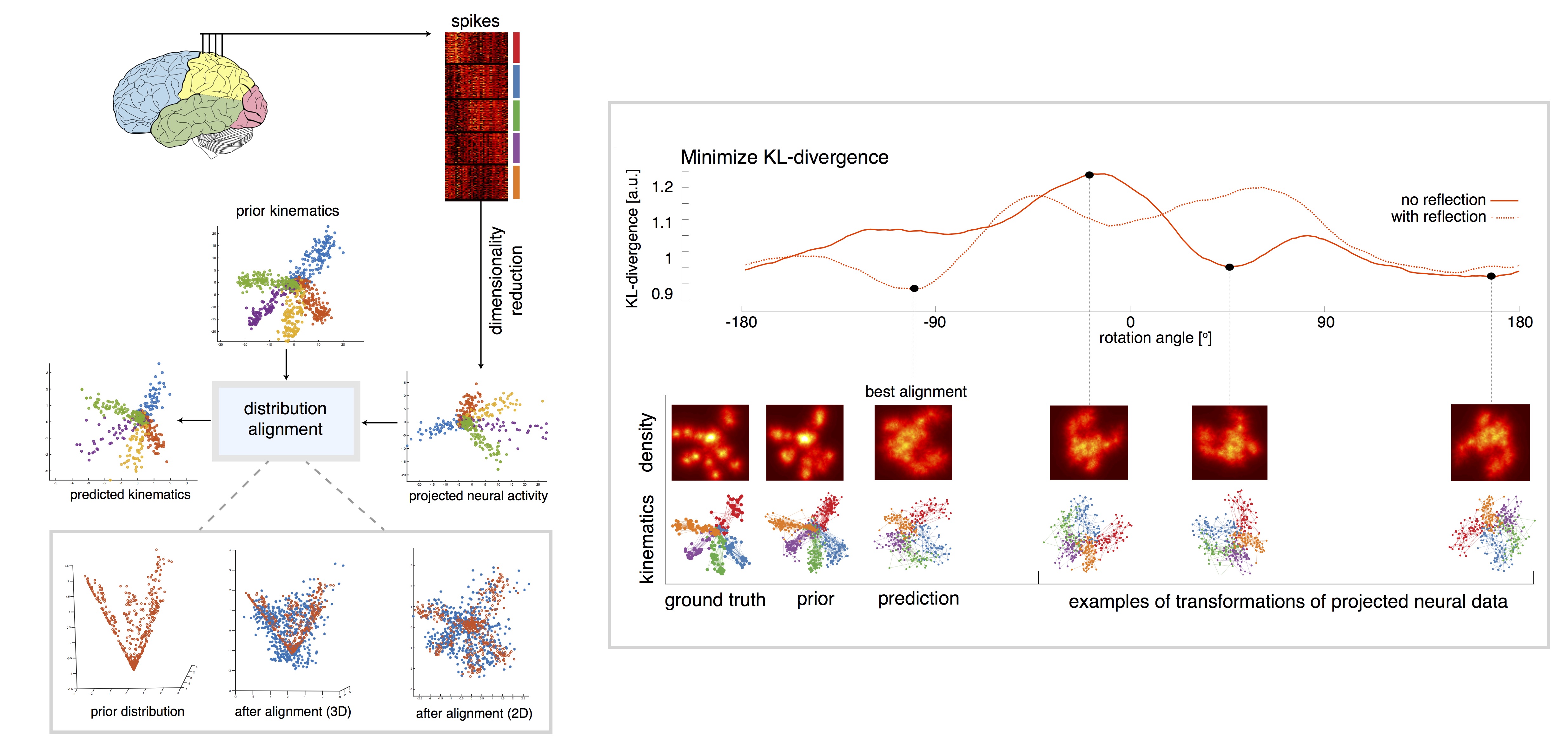Distribution Alignment Decoding (DAD)
DAD is an approach for movement decoding that does not require simultaneous recordings of neural activity and motor output.
Manuscript: EL Dyer, M Gheshlaghi Azar, HL Fernandes, M Perich, S Naufel, L Miller, KP Körding: A cryptography-based approach for movement decoding, bioRxiv, October 2016.
Abstract: Brain decoders use neural recordings to infer a user’s activity or intent. To train a decoder, we generally need infer the variables of interest (covariates) using simultaneously measured neural activity. However, there are many cases where this approach is not possible. Here we overcome this problem by introducing a fundamentally new approach for decoding called distribution alignment decoding (DAD). We use the statistics of movement, much like cryptographers use the statistics of language, to find a mapping between neural activity and motor variables. DAD learns a linear decoder which aligns the distribution of its output with the typical distribution of motor outputs by minimizing their KL-divergence. We apply our approach to a two datasets collected from the motor cortex of non-human primates (NHPs): a reaching task and an isometric force production task. We study the performance of DAD and find regimes where DAD provides comparable and in some cases, better performance than a typical supervised decoder. As DAD does not rely on the ability to record motor-related outputs, it promises to broaden the set of potential applications of brain decoding.
Code and Data
Code and data to generate figures in the paper are in the GitHub repo associated with this page.
Support or Contact
If you have questions, please contact Eva{dot}L{dot}Dyer{at}Gmail{dot}com.
